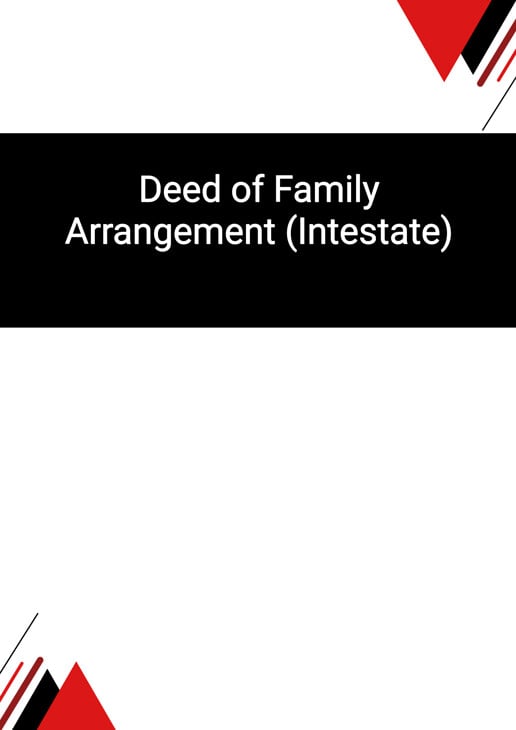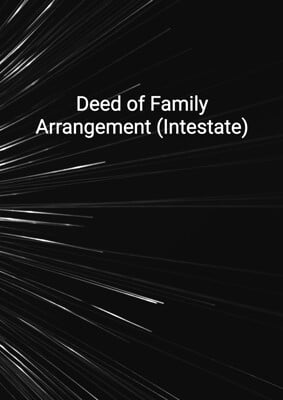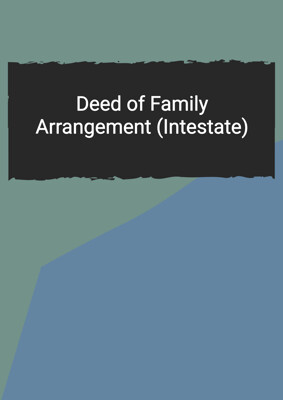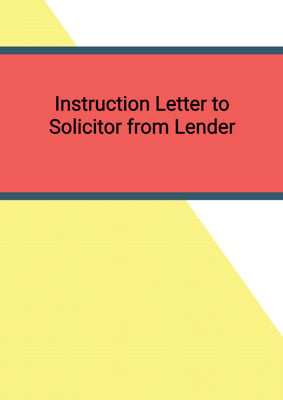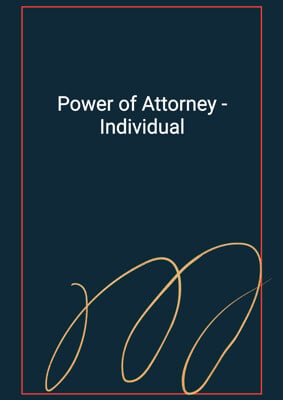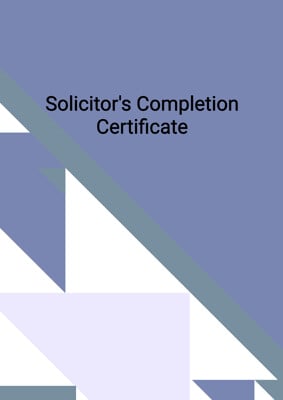How to Tailor the Document for Your Need?
01
Create Document
Fill in the details of the parties. You can click the "Fill with Member’s Information" button to complete it with information saved to your account.
02
Fill Information
Please fill in any additional information by following the step-by-step guide on the left hand side of the preview document and click the "Next" button.
03
Get Document
When you are done, click the "Get Document" button and you can download the document in Word or PDF format.
04
Review Document
The document should be signed by the authorised signatory (or directors of a company) and witnessed to complete the formality.
Document Preview
Document Description
The Deed of Family Arrangement (Intestate) is a legal document that is entered into by the parties involved to settle the distribution of the estate of a deceased person who died intestate. The document begins by providing a detailed introduction, highlighting the importance of the document in ensuring a fair and lawful distribution of the deceased's assets.
The entire document consists of several sections, each serving a specific purpose. The first section identifies the parties involved, including the first beneficiary, the second beneficiary, the third beneficiary, and the administrator. It also includes their respective addresses. This section establishes the individuals who have a legal interest in the estate.
The second section provides background information about the deceased, stating that they died intestate and survived by their lawful and natural children, as well as their widower. It also mentions that the deceased was the registered owner of a property, which is described in detail later in the document.
The third section states that the letters of administration of the estate were granted to the administrator by the court. It also confirms that all estate duties, funeral expenses, and debts of the deceased have been paid by the administrator without using any part of the property.
The fourth section mentions an assignment that took place, where the property was assigned to a purchaser for a specific consideration. This section clarifies the net proceeds of the sale, which is the amount received after deducting costs and expenses related to the assignment.
The fifth section emphasizes that the children and the widower are the only parties entitled to share in the distribution of the estate. It confirms that each of them holds their share for their own use, free from any encumbrances or subsidiary trusts.
The sixth section states the intention of the children to assign all their rights, interests, and benefits in the net proceeds of the sale to the widower. This section ensures that the widower becomes the sole beneficial owner of the net proceeds.
The seventh section authorizes the administrator to release and pay the respective shares of the children to the widower. It also includes an indemnity clause, where the children agree to indemnify the administrator and the estate from any actions, suits, expenses, claims, or demands related to the assignment.
In conclusion, the Deed of Family Arrangement (Intestate) is a crucial document that facilitates the fair distribution of the estate of a deceased person who died intestate. It provides a legal framework for assigning the rights and benefits of the net proceeds of the sale to the widower, ensuring a smooth transfer of ownership and avoiding any future disputes.
How to use this document?
To effectively use the Deed of Family Arrangement (Intestate), follow these steps:
1. Identify the parties: Enter the names and addresses of the first beneficiary, second beneficiary, third beneficiary, and administrator. This ensures that all parties involved are clearly identified.
2. Understand the background: Familiarize yourself with the background information provided in the document, such as the deceased dying intestate and the property owned by them. This will give you a clear understanding of the context.
3. Review the letters of administration: Confirm that the administrator has been granted the letters of administration by the court. This ensures that the administrator has the legal authority to handle the estate.
4. Verify payment of expenses and debts: Ensure that all estate duties, funeral expenses, and debts of the deceased have been paid by the administrator without using any part of the property. This protects the interests of all parties involved.
5. Understand the assignment: Grasp the details of the assignment mentioned in the document, including the consideration and the net proceeds of the sale. This will help you understand the financial aspect of the arrangement.
6. Acknowledge the children's intention: Recognize that the children are assigning all their rights, interests, and benefits in the net proceeds of the sale to the widower. This establishes the widower as the sole beneficial owner.
7. Coordinate with the administrator: Work with the administrator to release and pay the respective shares of the children to the widower. Ensure that the necessary paperwork and procedures are followed.
8. Indemnify the administrator and the estate: Understand the indemnity clause and ensure that the children agree to indemnify the administrator and the estate from any legal actions or claims related to the assignment. This protects all parties involved.
By following these steps, you can effectively utilize the Deed of Family Arrangement (Intestate) to settle the distribution of the estate and ensure a smooth transfer of ownership to the widower.
Not the right document?
Don’t worry, we have thousands of documents for you to choose from:
